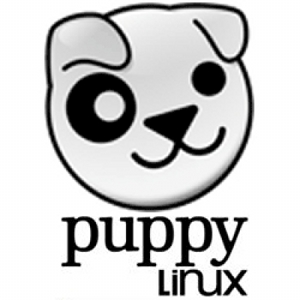
The classic cult film “Office Space” criticizes the life of programmers in a farm of cubes, and often very accurately reflects reality, sometimes even unintentionally. An example of one of these cases is Tom Smykowski, a character whose job is to “deal with clients so that programmers don’t have to.” In the film, the whole role of Tom comes down to this brief definition, but in fact his role is extremely important for most real enterprises that rely on the work of programmers to make their key product.
Engineers and programmers may have difficulty communicating with clients, and often they simply do not have the time (or desire) to interact with them. Customers may be annoyed by trying to understand programmers or clearly communicate their ideas to them. Having a person like Tom Smykowski is often necessary in order to close this gap and smooth out all corners, but in the Linux world there are too few such volumes. Clients, or users, in many situations have to deal directly with programmers, and the results are unsatisfactory from the point of view of representatives of both groups. Linux has a marketing problem and needs a marketing solution if it wants to increase its market share in the PC world.
If you have ever gone deeper into the diverse and multifaceted world of Linux than installing ready-made assemblies like Ubuntu or Mint, you must have met someone who claims that Linux is correctly called GNU / Linux, or that rants about the dangers of binary blobs , or something else then from a long list of topics. And any of the arguments may be correct - however, it can instantly avert a person who is simply trying to pick up high-quality software, and who does not yet care about any nuances, or FOSS , or the motivation of people involved in creating programs. Of course, these developers and programmers need to be praised and respected for the creations they created, but they cannot be expected to take the right approach to advertising these products, since they are not marketers. They carefully and passionately hold various opinions on issues related to software, but this cannot be considered a good way to interact with the outside world. The key problem here is that people who are well versed in this topic often experience problems in conveying their knowledge to the general public, and they need help.
2099: The Year of Linux on Desktops
Let's try to look deeper into this problem and its connection with Linux, and look at the general statistics on the use of the OS. In the market of desktop computers and laptops, 87% belongs to Windows, macOS with 10% is woven behind it, and Linux with a share of less than 4%. Microsoft and Apple have huge advertising budgets and have the advantages of large corporations. However, if we look at systems whose sales do not rely on advertising, for example, take a look at the world of supercomputers and servers, Linux will dominate there. Almost 100% of supercomputers today use Linux. The concept of a “web server” can be defined in different ways, and the proportion of Linux on them varies from 70% to 98%, depending on whether we consider cloud services and subdomains - however, in any case, most of the web runs on Linux. Even on smartphones, Linux-based Android dominates: 65% of these devices use it, 20% use iOS, and the rest are a mixture of fading Blackberrie, Windows Phone and others.
From these figures we can conclude that there are some advantages in working on a Linux system. It dominates not only in cases where only the computing power is required, as in the case of supercomputers or web servers - it must have some effective ways to ensure the work of personal computers, otherwise the Android OS would not be such a popular system for smartphones and tablets. Consequently, it follows logically that Microsoft and Apple dominate the world of desktop computers because there are advertising departments behind their products that provide customers with a comfortable layer between them and engineers with programmers working for these companies. All this drowns out reports about the very existence of Linux in the world of personal computers.
You can't handle Linux
To give an example of how annoying the jargon of the Linux world can sometimes be, take a look at Puppy Linux , a version of Linux specifically designed to work with plug-in media or old hardware. It has existed since the early 2000s, so it is not a beginner. Its main properties are its small size and the ability to save state on the media from which it was launched, to store all settings and files between OS restarts and different machines.

The installation process is not obvious, despite the age of the OS, and requires two separate removable media or one coupled with a computer where Puppy is already installed. It would seem that on the site distributing the OS, there should be some instructions or a link to them. Instead, the main page contains, in fact, a treatise that Puppy Linux is not a distribution in the usual sense, and a technical description of what can and cannot be considered a Linux distribution.
It is confusing that under these considerations references are given under the name “Official Distributions”. A great example of too close interaction between users and engineers. It is as if we had to listen to a lecture on the differences between Phillips and Torx screwdrivers before being able to use a screwdriver for simple manipulations. First we need to understand how to install and use the program, and only then, after understanding this, we will be able to explore its nuances and ideology.
Of course, we pounced on Puppy Linux to give an example, but this trend is not uncommon in the Linux world. On the other hand, a counterexample of how it can work and work well even the simplest buffer between users and developers can be found at Canonical, the distributor of Ubuntu. Their homepage is informative, easy to understand, not littered with jargon. The download page is easy to find, as are all installation instructions. There are also certain shortcomings - for example, 64-bit versions of the OS are designated as "AMD", although they can run on Intel processors as well - this is a relic of those forgotten times when 32-bit processors were the norm. Nevertheless, this is a great example of how hassle-free the distribution kit can be when there is a group of people between the creators of the software and its users who understand the needs and desires of other people and works as a layer like Tom Smykowski.
Problem in choosing
Part of the problem is that Linux and most of its software are free and open. This can be a strong point when it comes to software quality, flexibility and customization, but it can also be a weakness, since it does not provide income for financing the advertising department, which could solve key communication problems between potential future users and software creators. Canonical, Red Hat, SUSE, and others are working with varying degrees of success, but this is an illustration of another problem: the fragmented nature of open source software fragmentes not only the software, but also its resources.
Imagine there would be hundreds of macOS versions that all Apple users should know about before deciding which one is best for their needs. But Apple maintains unity, which is good from the user's point of view. And Apple’s annual budget is $ 71 billion compared to Canonical’s $ 6.2 million, which also doesn’t harm Apple and further emphasizes the importance of having a marketing budget and its size.

In my conclusions, I use several assumptions, namely that the "Linux community" is a monolithic block, and not a fragmented confederation of people with certain interests in the computer world, often not related to the OS. There is no single point of contact for everything related to Linux, and because of this, it is quite difficult to generalize to the entire community. In particular, the Linux community does not have a single “goal”, and perhaps none of its members has any desire to gain 1-2% of the personal computer market share.
As an electrical engineer, who sometimes has difficulties with pointers when working with code, I am in the margins of this community. However, all this criticism comes from respect and admiration for everyone who gave me the opportunity to use free software, even if sometimes I can hardly figure it out. I completely switched to Linux since I changed XP to 5.10 Breezy Badger, and would love to be in a world where they don't push me into the corporate hell of Windows just because most users know how to use Windows.
I think that this can be realized with a coherent marketing strategy, but passionate essays on “free software and freedom” or how to correctly pronounce “GNU” or the advantages of Gentoo over Arch will not be enough for this. This will only happen if someone can unite all these disparate groups around a coherent and simple idea, and sell it to the public. We need someone who can turn something like Jump to Conclusions Mat into millions of dollars [a reference to the ridiculous business idea of one of the characters in the film “Office Space” / approx. perev. ].